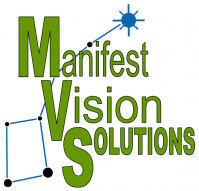When RASCI #2321 is not enough
July 23, 2012 1 Comment
You know you have a program that is set up to fail when:
There are two thousand three hundred twenty one RASCIs and still no one knows what they are supposed to do and what they are not supposed to do. And they spend all their time protecting what they think they should do and arguing with the other guy about what they should and shouldn’t be doing.
I’ve been on a program like that. Every other day someone wanted to create yet another RASCI (if you don’t know what that is, consider yourself lucky) at yet another level of detail to attempt to take responsibility for something; or better yet to place blame on someone else for something that’s not going so well. Needless to say, not much was getting done except to fight over who did or didn’t do what to who.
I’ve also been on a program where there were no RASCIs at all. WHAT, not even one? This was a program where people knew whether they were a screwdriver or a butter knife (see http://visionpeak.wordpress.com/2012/02/01/the-butter-knife-and-the-screwdriver/) and had no desire to be anything else. Everyone was busy, contributing, and being recognized so it wasn’t necessary to worry about what the butter knife was doing; being a screwdriver was enough. Not only was it enough; it was fun!
Why do you suppose that was? I believe it’s because every person could see in their own mind exactly where the program was headed. And people all saw the same picture. Everyone knew what was required to get there and what their role was (screwdriver or butter knife) in getting there. They also believed that it took both the screwdrivers and the butter knives to get there, neither was enough alone and neither could do the other’s job near as well. Trust was implicit.
So how did that come to be? In this case, investment was made “up front” to create that common vision of what success looked like. Along with that was a description of what and who was required to get there; both the screwdrivers and the butter knives. All this, before the implementation program was even launched; there wasn’t a systems integrator in sight (or billing by the RASCI line). For this program it wasn’t so much about how it was going to be done; it was about figuring out what to do first.
The payback? An implementation program that was on time and under budget.
Sometimes I twitch when I hear RASCI. Maybe you might need one RASCI, but many more than that and you’re probably headed for a program that is set up to fail. And if you feel you need to have that one, it’s best to not have too many lines…
Don’t twitch!
© Ellen Terwilliger 2012


